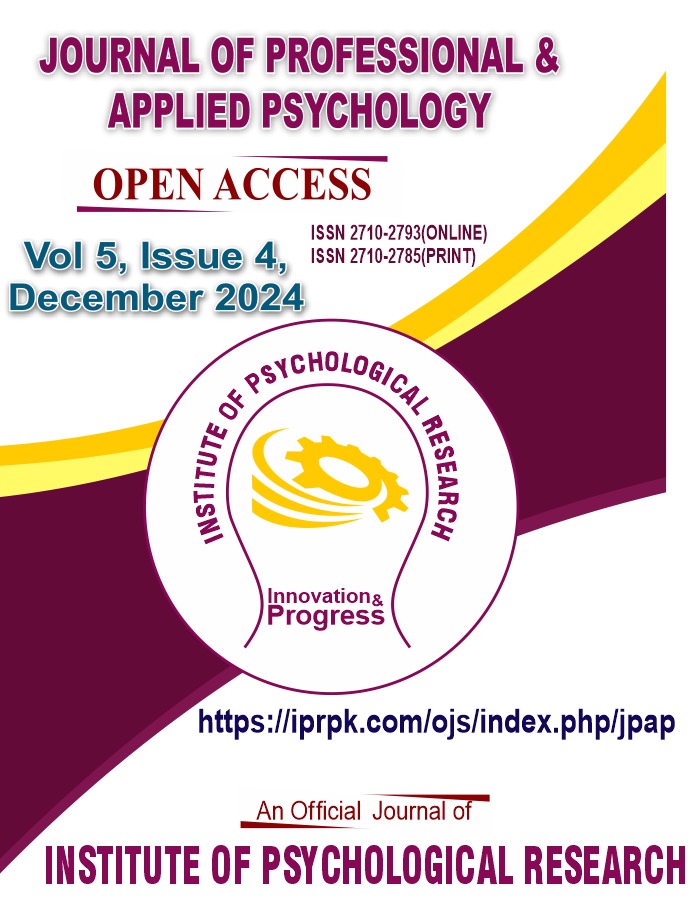Reducing Loud Vocalization through Noncontingent Reinforcement and Differential Reinforcement of Incompatible Behavior in a Child with Autism Spectrum Disorder
DOI:
https://doi.org/10.52053/jpap.v5i4.326Keywords:
Autism Spectrum Disorder, Differential Reinforcement of Incompatible Behaviors, Noncontingent ReinforcementAbstract
The prevalence of Autism Spectrum Disorder (ASD) has increased in recent decades and development of treatment techniques for the disruptive behaviors associated with autism has become an essential requirement. This research investigates the role of Non-contingent Reinforcement (NCR) and Differential Reinforcement of Incompatible Behaviors (DRI) for loud vocalizations, particularly among children with ASD. A functional behavior assessment was done to determine the targets of the intervention; this intervention consisted of 14 sessions of reinforcement statements. Intervention was implemented by teachers, including statements to reinforce desirable behavior and reduce undesirable behavior. With the help of NCR and DRI strategies, treatment was designed for loud vocalizations at home, school and clinic. Assessments were also done once a week after a month’s interval to check whether the changes were lasting. The outcome of the intervention showed that it was effective in the reduction of loud vocalizations. Subsequent follow up results showed that these changes were also maintained; showing the effectiveness of interventions as successful. It was further shown that children with ASD benefitted greatly from individualized treatment plans due to these positive outcomes, providing further understanding of behavioral difficulties of such populations.
References
Ahearn, W. H., Clark, K. M., MacDonald, R. P., & Chung, B. I. (2007). Assessing and treating vocal stereotypy in children with autism. Journal of Applied Behavior Analysis, 40(2), 263-275.
Andzik, N., Smith, E., & Neef, N. (2022). Using a token economy to treat escape-maintained problem behavior without extinction. Behavior Modification, 46(1), 128-146. doi: 10.1177/0145445520966762
Badri, A. (2023). Addressing Stereotypical Behaviors in Children with Autism: A Delphi Study (Doctoral dissertation, University of Arizona Global Campus).
Bishop, S. K., Moore, J. W., Dart, E. H., Radley, K., Brewer, R., Barker, L.?K., Quintero, L., Litten, S., Gilfeather, A., Newborne, B., & Toche, C. (2020). Further investigation of increasing vocalizations of children with autism with a speech?generating device. Journal of Applied Behavior Analysis, 53(1), 475–483. https://doi.org/10.1002/jaba.554
Bouton, M. E., Maren, S., & McNally, G. P. (2021). Behavioral and neurobiological mechanisms of Pavlovian and instrumental extinction learning. Physiological Reviews, 101(2), 611-681. doi: 10.1152/physrev.00016.2020
Boyle, M. A., Augustine, J. J., Garton, E. M., Sharp, D. S., & Mansfield, H. M. (2022). Incorporating noncontingent reinforcement into functional communication training. Behavioral Development, 27(1-2), 43. https://doi.org/10.1037/bdb0000109
Brooks, M. (2024). Noncontingent Reinforcement: A Functional versus Nonfuctional Approach to Reducing Disruptive Behavior and Increasing Academic Engagement across Socially Maintained Functions [Doctoral Dissertation, Illinois State University].
CDC Newsroom. (2023). CDC. https://www.cdc.gov/media/releases/2023/p0323-autism.html#:~:text=One%20in%2036%20(2.8%25),1%20in%2044%20(2.3%25).
Cleaveland, C. Y. (2020). Investigation of research-proven comfort and support strategies for students with autism spectrum disorder (Master's thesis, Purdue University).
Cooper, J. O., Heron, T. E., & Heward, W. L. (2007). Applied Behavior Analysis (Global ed.). Pearson Education Ltd.
Knowles-Cervantes, M. F. (2020). The Effects of Non-Contingent Reinforcement and Differential Reinforcement of Alternative Behaviors on the Reduction of Problem Behaviors and Acquisition of Alternative Responses for Children with Autism Spectrum Disorder. The Chicago School of Professional Psychology.
Mantzoros, T., Lee, D. L., Ajemigbitse, A. R., & Stover, L. J. (2023). Implementing a differential reinforcement of low rates schedule to alter vocal stereotypy and task engagement in two adolescents with autism spectrum disorder. Behavioral Interventions, 38(3), 689-705. DOI: 10.1002/bin.1948
Myerberg, B. (2022). Unconditional Positive Regard: The Impact of Parent-Mediated Non-Contingent Intervention Using Positive Praise on the Challenging Behaviors of Children with Autism Spectrum Disorder (Doctoral dissertation, The Chicago School of Professional Psychology).
Newman, Z. A., Roscoe, E. M., Errera, N. P., & Davis, C. R. (2021). Noncontingent reinforcement: Arbitrary versus maintaining reinforcers for escape?maintained problem behavior. Journal of Applied Behavior Analysis, 54(3), 984-1000. doi: 10.1002/jaba.821
Rapp, J., Cook, J., McHugh, C., & Mann, K. (2017). Decreasing stereotypy using NCR and DRO with functionally matched stimulation. Behavior Modification, 41, 45-83. doi: 10.1177/0145445516652370
Sharma, P., Sharma, A., & Parante, K. (2021). Cognitive and Social Behavior-An Intervention Study on An Autistic Child with Delayed Development. International Journal of Indian Psych?logy, 9(2), 187-195. DOI: 10.25215/0902.024
Watts, A. C., Wilder, D. A., Gregory, M. K., Leon, Y., & Ditzian, K. (2013). The effect of rules on differential reinforcement of other behavior. Journal of Applied Behavior Analysis, 46(3), 680-684. https://doi.org/10.1002/jaba.53
Weston, R., Hodges, A., & Davis, T. N. (2018). Differential reinforcement of other behaviors to treat challenging behaviors among children with autism: A systematic and quality review. Behavior Modification, 42(4), 584-609. doi: 10.1177/0145445517743487
Downloads
Published
How to Cite
Issue
Section
Categories
License
Copyright (c) 2024 Mishal Shabbir, Muhammad Ismail Masood , Zafar Ahmad

This work is licensed under a Creative Commons Attribution-NonCommercial 4.0 International License.
Creative Commons Attribution-Non Commercial 4.0 International (CC BY-NC 4.0) License: This article is distributed under the terms of the Creative Commons Attribution-Non Commercial 4.0 International License (https://www.creativecommons.org/licenses/by-nc/4.0/) which permits non-Commercial use, reproduction and distribution of the work without further permission provided the original work is attributed as specified on the Journal website at (https://iprpk.com/ojs/index.php/jpap)












